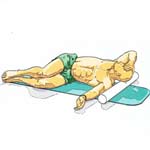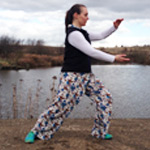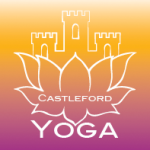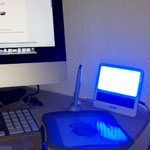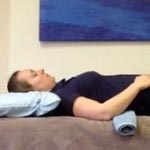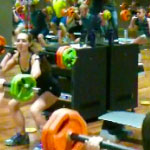Are you starting to feel SAD?

“Image courtesy of imagerymajestic/ FreeDigitalPhotos.net”
You might be craving light now that the days are getting shorter and darker.
For some people the lack of daylight in autumn and winter can lead to seasonal affective disorder (SAD). SAD is a condition which typically causes feelings of lethargy and melancholy throughout the winter months. Have you noticed a change in your motivation to attend your usual activities such as Yoga class or going to the gym? Maybe you feel less centred, you get irritable more easily and you feel like pulling your blanket over your eyes when the alarm rings in the morning? Even cravings for sweet things can be a side effect of feeling the winter blues. (1)
The lack of daylight amongst other things can cause serotonin levels to drop leading to the feeling of ‘winter blues’ many of us know. Serotonin is a mood-enhancing chemical that regulates appetite, sleep and is thought to be a contributor to feelings of well-being and happiness.
To maintain good serotonin levels we need regular light exposure, something that’s also essential for adequate vitamin D levels. It’s a good idea to start a new habit throughout autumn and winter – get outside at lunchtime when the sun’s rays are strongest. Vit. D is vital for making enough serotonin during the dark months. If you are unsure whether you are suffering from low Vit. D levels, get your GP to test with a simple blood test. Beware the lowest acceptable levels in mainstream medicine are generally not sufficient for good health. Read a detailed explanation on how best to understand your results from the Vit. D Council here.
In one study Vitamin D was associated with a better ability to catch a full night’s sleep, and in personal experience I would have to agree, ever since I started supplementing a few years back. (2)
For me it was a revelation when I finally figured out that it was SAD making me not be myself for a huge part of the year. In summer: I felt like myself, life is good and everything comes easy. In winter, however: I used to feel so bad and everything that mattered to me, such as my relationship and my job, was in jeopardy. Over the years I have been working holistically on my lifestyle habits and am now happy to say winters are not as scary as they once were. Should I start feeling a bit ‘off’ I know what to do and that it isn’t just me being my own bad company.
I hope you find my little list below helpful in the quest to make your future winters depression-free:
Vitamin D
You have several options when taking a self-help approach to dealing with depressive moods. Two essentials that can be easily implemented are light therapy and vitamin D supplementation throughout winter. You can also get some Vit. D if you expose your skin to the sun during the brightest hours of the day.
Note: you cannot get Vit. D topped up using artificial light therapy because the bright lamps do not emit UV rays. Vit. D cannot be produced without UV irradiation.
The symptoms of vitamin D deficiency:
|
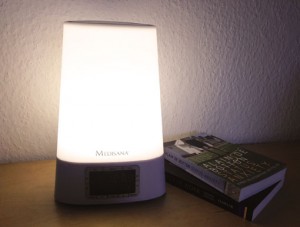 |
Light therapy
In clinical settings light therapy is also successfully used to treat major depression at any time of the year. Patients that started their day sitting in front of a light therapy box emitting ‘10000LUX’ found they had significantly lower levels of depression during the rest of the day.
I’ve personally used a wake-up light since 2006, when I had to get up at 5am to travel to London for work. It was tough but the sunrise alarm has helped me feel less stressed – getting woken up by the light rather than violent beeping. I also invested in a SAD light from Philips called ‘goLITE’ one winter since I got the sunrise clock. I use the light therapy on my desk whilst working and first thing in the morning whilst having breakfast. The nice thing about the goLITE is that it’s small enough to take when traveling long-haul where the chance of jetlag are very high. I used it last Christmas when traveling to Japan and didn’t experience any of the usual jetlag at all.
Eating a mood enhancing diet
The best way to get your body to re-balance is to eat according to your metabolic type, which is something that can be determined using a simple questionnaire. Every meal and snack must contain protein, fat and carbohydrates in a ratio that work best for your metabolic type. After an initial adjustment period you will find it easy to get your ratios right, and with that maintain better blood sugar levels as well as avoid hunger pangs. I have discussed food and metabolic typing before in relation to fuelling your workout. You can check out part 1 (which goes into more detail on things to consider when metabolic typing) & part 2(which explains why fat and protein are soooooo good for feeling awesome naturally) here.
When I stopped being fat-phobic my depressive tendencies ceased. Where I would previously count myself part of the group of people genetically predisposition to suffering from depression, I am now very balanced and generally only feel upset about actual life events rather than feeling off for no good reason. Personally, I really like the book from Julia Ross, The Mood Cure.
“The Mood Cure is a comprehensive natural approach that jump-starts your program with brain-fuelling amino acids combined with a high-protein, healthy-fat, veggie-rich diet and other nutritional strategies.”
If you need help figuring out how to adapt your current way of eating to make it more effective for energy, performance and health – get in touch! I am more than happy to help you find your way there.
Stay active
Movement helps to relieve stress, boost circulation and increase your energy levels. It doesn’t always have to be a full-blown exercise session. Going for regular short walks or doing a quick yoga sequence can make all the difference.
Intense exercise where you sweat your heart out can trigger adrenaline and endorphins, the problem is that some people get addicted to the feeling and cannot live a day without working out to their limits, which in the long run poses its own problem of over training and becoming chronically fatigued. Chronic fatigue can also bring depressive feelings, which is certainly something you want to avoid. Moderation is, as always, the best way to go.
Try this nice 7min Qigong session from Lee Holden first thing in the morning. It’ll get your juices flowing, joints moving, and your mind settled for a great start to the day:
Sleep
To feel good it is essential that we get enough sleep at the right times.
The body loves rhythm and predictability. It is best to sleep between 10pm and 6am. From 10pm to 2am the body repairs its physical structures; between 2am and 6am it sorts out emotions thoughts and experiences. If we miss either of those two phases it has a detrimental knock on effect on our health.
If you currently go to bed extremely late, i.e. much later than 11pm, start changing your bed time to 15min earlier each week over a period of weeks until you end up going to sleep by 10:30pm on a regular basis. If you abruptly start going to bed 2hours earlier than before you’ll just end up lying in bed being tormented by thoughts and the inability to fall asleep. Taking the time to transition means the change can be successful long term.
There are quite a few things you can do to help your body recognise it’s bed time, such practicing zone exercises, dimming the lights, having a warm magnesium salt bath with essential oils such as lavender, or reading a book whilst lighting incense sticks, creating a cosy environment. This is something I have gone into much more detail on in a previous post on how to get restful sleep.
Mindfulness meditation
Over the last year or two mindfulness has gained a lot more exposure online, being recommended by people who all successfully started to practice when they realised that life is fast and, often, too draining without having quiet islands where the mind can breathe. Mindfulness techniques have been shown to be effective in managing emotions and thoughts in a more helpful way, to give you more peace of mind.
Whether you are new to mindfulness and feel totally apprehensive of the fact that you’re going to be quietly listening to your mind and body or already regularly practice, you should take a look at my favourite, totally positive, guided meditation app from Headspace. Andy, the founder of Headspace, has found a way to make meditation and mindfulness accessible to even the most resistant minded person – which used to be myself. I used to think anything slow and mindful is a waste of time – oh boy was I wrong! I took up regular meditation in February 2013, it was the best decision I have ever made. It has helped me be calmer, happier from the inside, and my body appreciated me taking the time to notice the messages it was sending. My Ankylosing Spondylitis pain and stiffness improved within a week, and by autumn I was able to sleep through the night for the first time in several years. It’s a shame that I wasn’t ready to give this a go earlier, although I understand that I really needed to be at the right place in my journey for it to work as well as it did.
Meditation and mindfulness can help you train to ‘meet’ your emotions, thoughts and physical sensation with an non-judgemental kindness and acceptance, which is the basis of letting go of what is paining your mind or body. Don’t worry, you don’t have to empty your mind – watch this animation of the ‘blue sky analogy’ from Headspace and you’ll always be able to smile to yourself on a grey day:
https://www.youtube.com/watch?v=DmqI1u72QLU
Sunbed
You may think: “why not just go to the sunbed parlour frequently?” It’s certainly an option, but should probably only be used in moderation as an addition to home light therapy. The Vitamin D Council has an article where it discusses studies which have shown that people tend to feel better after exposure to ultraviolet (UV) radiation. (3) It does make sense that it would help us feel better, as always the poison maybe in the dose, more is not always better. Professor Tim Oliver (an oncologiest) says that a single five to ten-minute session once every six weeks should be sufficient due the whole body being exposed during a single sunbed session.
St. John’s Wort
St John’s Wort is a natural antidepressant commonly prescribed in countries such as Germany for mild to moderate depression.
It’s important to know that when you use light therapy and are supplementing with St John’s Wort that you may find that you’re more sensitive to bright light. You may need to choose which out of the two self-help options best alleviates your SAD feelings to avoid problems. Although St John’s Wort is a plant-derived supplement it’s important to check whether it is suitable for you before use. There are quite few interactions with other medication including the contraceptive pill.
Acupuncture
Chris Kresser discusses the option of using acupuncture to help with depression. I think that it is worthwhile to try out, since it can also help with other conditions that may occur alongside depression, such as general pains and stress.
When I had acupuncture in the past for other conditions other than depression I noticed that one of the benefits is having to take some time to just lay there and let the needles work their magic. It’s probably a good time to use for meditation, guided or just self-initiated, after all the mind is powerful. Why not use some positive self-programming to help the process along? It certainly worked for me, significantly lessening my Ankylosing Spondylitis pain.
Massage Therapy
Many of us have used massage for a variety of health-related purposes such as relieving pain, reducing stress, inducing relaxation, addressing anxiety and depression, and aiding general wellness.
Massage is said to help with depression because it triggers the release of endorphins. Endorphins have the ability to act as a painkiller as well as a sedative. It can help you slow down and release stress and, alongside that, tension.
You’ll feel heart rate slowing down, which in turn lowers blood pressure. The gentle pressure and strokes of the therapist’s hands can positively stimulate the nerve endings across the whole body. This tissue stimulation also helps remove toxins from the tissue as it improves circulation. All of these effects help to energize the body, which in turn improves concentration and can even create a euphoric feeling.
Because the effects of massage can be felt immediately it’s a very effective non-invasive self-help option. It is advised to have regular massage sessions (between two and four massages per month) to optimise results when using it as a treatment for SAD.
Amino acid therapy
This type of therapy uses supplemental amino acids to help balance brain chemicals (neurotransmitters) and other aspects of your body’s physiology.
You can get amino acids from your food but when your body is very out of balance it may take a long time to get everything back to balance and you may feel things are not working (since we humans are very impatient).
Amino acid therapy is often used to help address many of the symptoms listed in the table below. Each neurotransmitter has a specific amino acid which is required for its synthesis and plays a particular role within the brain and body. (4)
Amino Acid Precursors
| Neurotransmitter | Neurotransmitter plays a role in: | Amino Acid Precursor |
| Serotonin | Sleep cycle, depression, anxiety, carbohydrate cravings, PMS | l-tryptophan |
| Dopamine | Focus, attention, memory, motivation/ drive, mood, addictive disorders | l-tyrosine |
| Norepinephrine | Energy, drive, anxiety, focus, metabolism, mood | l-tyrosine |
| Epinephrine | Energy, drive, anxiety, focus, metabolism, mood | l-tyrosine |
Things you can do to avoid feeling depressed all winter – top self-help options for Seasonal Affective Disorder:
- Throughout autumn and winter, get outside at lunchtime when the sun’s rays are strongest.
- Use a Vit. D supplement to keep your levels up during winter when it’s harder to spend enough time in the sun to get the body producing it naturally.
- Eat to your metabolic type with a Primal Pattern diet (“Eat yourself well”) – this will stop the seasonal weight gain frequently associated with SAD.
- Stay active – movement helps to relieve stress, boost circulation and increase your energy levels.
- Ensure good sleep by getting into a regular pattern.
- Mindfulness meditation techniques have been shown to be effective in managing emotions and thoughts in a helpful way, giving you more peace of mind (Try Headspace).
- Use artificial light therapy with a modern light box (also known as a ‘SAD lamp’ or ‘light therapy box’) that emits 10,000 lux, without UV rays, for 30–60 minutes a day. I personally use a light box for a few years now and find it very helpful indeed.
- Sunbed – it’s an option, but obviously should be used in very moderate doses due to the side effects it has. Maybe combine it with a home SAD lamp.
- St. John’s Wort – a natural antidepressant commonly prescribed in counties such as Germany for mild to moderate depression.
- Acupuncture – may help with depression and associated issues such as pain and stress.
- Diet does play a huge role in how we feel and how well our body functions, that includes our mood. Here’s a great book about it.
- Massage therapy may help lift your mood and improve how you experience stress.
- Amino acid therapy is something you can look into if you feel you have more severe chemical imbalances that are not resolving with easy-to-do lifestyle adjustments. It’s best to work with a practitioner to test and address this, and to get results quickly.
Get started early to get the best effect
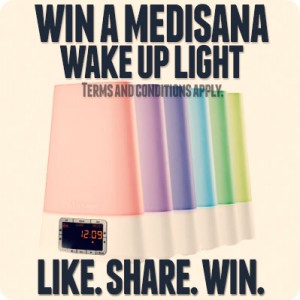
Now is a good time to get organised and plan how you want to tackle your seasonal affective disorder for this year.
Whichever options you choose to go with, they will be much more effective if you have a routine in place before the days get really dark.
Whilst you are doing your research on which methods you’d like to try this year you should still try to make the most of the sunny late summer days, going outside for lunch even if it is only for 5 minutes to fill up on naturally produced Vit. D.
Winter does not have to feel horrid. I have had a couple of good winters now and am looking forward to 2014/15, hopefully with the same success.
If you haven’t already why not enter my Medisana wake-up light clock giveaway on Facebook or Twitter.
In my next post I will discuss which light therapy lamps are the most cost effective, as well as functional. Whether to get both a SAD light and a sunrise wake-up alarm clock or if one or the other is sufficient.
Why not sign up for my free news update so that you never miss a post?
I hope that this year’s winter will be the one where you can start enjoying it and for the many years that follow!

